#Rudi van Dantzig
Explore tagged Tumblr posts
Text
Megan Zimny Kaftira and Isaác Hernández

Megan Zimny Kaftira as “Juliet Capulet” and Isaác Hernández as “Romeo Montague���, “Romeo and Juliet Romeo en Julia”, choreo by Rudi van Dantzig, music by Sergey Prokofiev Сергей Прокофьев, based on the tragedy by William Shakespeare, Het Nationale Ballet Dutch National Ballet, Het Muziektheater, Amsterdam, Netherlands.
Source and more info at: Photographer Altin Kaftira on Vimeo Photographer Altin Kaftira on Twitter Photographer Altin Kaftira on Threads Photographer Altin Kaftira on You Tube Photographer Altin Kaftira on Facebook Photographer Altin Kaftira on Instagram
Altinfilms Website Altinfilms on Twitter Altinfilms on Facebook Altinfilms on Instagram
Note I: This blog is open to receiving and considering any suggestions, contributions, and/or criticisms that may help correct mistakes or improve its content. Comments are available to any visitor.
Note II: Original quality of photographs might be affected by compression algorithm of the website where they are hosted.
#Altin Kaftira#Het Muziektheater#Het Nationale Ballet Dutch National Ballet#Isaác Hernández#Juliet Capulet#Megan Zimny Kaftira#Romeo and Juliet#Romeo en Julia#Romeo Montague#Rudi van Dantzig#Sergey Prokofiev Сергей Прокофьев#William Shakespeare#Dans#Dansen#Danser#Danza#Dance#Danse#Dancer#Балет#Ballet#Balet#Balletto#Ballett#Ballerina#Ballerino#Balerino#Balerina#Bailarina#Tänzer
0 notes
Link
Rudi van Dantzig was a Dutch choreographer, company director, and writer. He was a pivotal figure in the rise to world renown of Dutch ballet in the latter half...
Link: Rudi van Dantzig
0 notes
Text
Een betoverende reis door het leven in 'Renaissance'
Recensie en foto’s: Mieke van der RaayOp woensdag 11 december beleefde de indrukwekkende dansvoorstelling Renaissance zijn première in het Internationaal Theater Amsterdam (ITA). In deze unieke en persoonlijke productie brengen Igone de Jongh en Marijn Rademaker het levensverhaal van De Jongh tot leven. Het resultaat is een intieme en ontroerende reis vol emotie, kracht en kwetsbaarheid, begeleid…
0 notes
Text

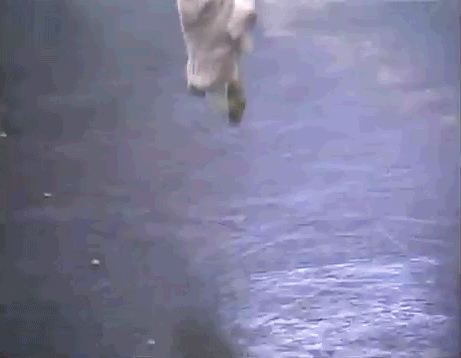

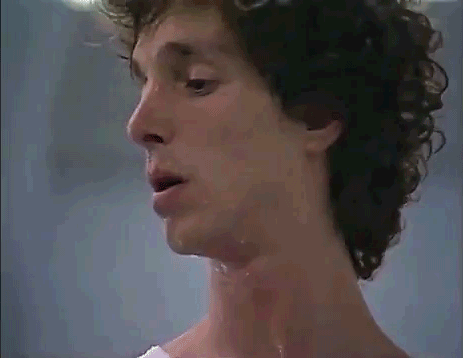
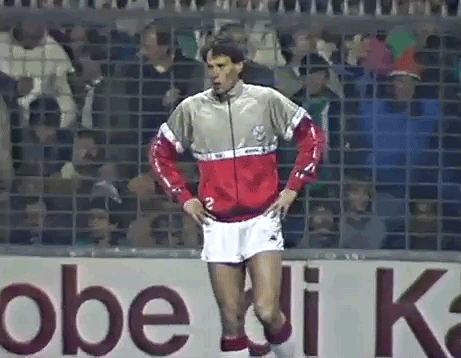

"In Italy they saw beauty in the way I moved, they felt my style was graceful. That’s why they called me The Swan. There’s also an Italian children’s book, a fairy tale about the Utrecht Swan, Il Cigno di Utrecht, based on my life in football. (...) The Dutch TV show Studio Sport once made a programme comparing my movements on the football pitch with those of a ballet dancer. The ballet guru and choreographer Rudi van Dantzig and Johan Cruyff discussed the similarities and differences between elite ballet and elite football. It’s a compliment to be compared with a top dancer. It was very interesting, and the visuals were excellent too. You saw elegant movements of mine at De Meer, match images with classical music backing. And they arranged for a top ballet dancer, Clint Farha of the Dutch National Ballet, to dance in an empty Ajax stadium. It was called Feints."
Schijnbewegingen (1988) / Basta: My Life, My Truth by Marco van Basten
#marco van basten#johan cruyff#ajax#ac milan#gifs#i'm so insanely obsessed with the documentary!!#something about the parallels between art and sport; sport as a vehicle for beauty
33 notes
·
View notes
Photo

Rudi van Dantzig (deceased)
Gender: Male
Sexuality: Gay
DOB: 4 August 1933
RIP: 19 January 2012
Ethnicity: White - Dutch
Occupation: Choreographer, dancer, writer, company director
#Rudi van Dantzig#lgbt history#gay history#lgbt#mlm#male#gay#1933#rip#historical#white#dutch#choreographer#dancer#writer
80 notes
·
View notes
Text
Día 20

- Por un soldado perdido. (Voor een verloren soldaat. Holanda, 1992. Dir. Roeland Kerbosch)
Jeroen, un coreógrafo holandés, viaja a una aldea donde vivió de niño de 1944 a 1945 y recuerda un suceso crucial de su pasado. Durante la segunda guerra mundial, él junto con otros niños fue enviado a las afueras para guarecerse de la ocupación Nazi. Al poco de la liberación, Jerome conoció al que sería su primer amor: Walt, un joven soldado canadiense.
Basada en una novela autobiográfica de Rudi van Dantzig, se trata de una historia iniciática. Jeroen vive el despertar de su sexualidad primero con un amigo con quien nada desnudo y después con Walt. Pero no es solamente una historia de amor. Es también una reflexión sobre la comunicación humana. Jeroen solo habla neerlandés y Walt solo habla inglés (aunque ambos aprenden algunos fragmentos). La aldea en que vive parece estar consciente de las relaciones que establecen los soldados con las y los jóvenes, pero les dan mensajes ambiguos al respecto. El pescador con quien Jeroen vive solamente le reprocha que no comparta con los demás los chocolates que Walt le regala.
Además, varias escenas funden maravillosamente la realidad y el sueño, o el recuerdo: Jeroen adulto conversa consigo mismo de niño y hablan justamente sobre las cosas que no están seguros de haber recordado bien. O quizá, que no querían recordar con claridad hasta ahora que hay un ajuste de cuentas con el pasado.
La película trata un tema que muchos probablemente crean espinoso, pero lo hace con tal naturalidad que conmueve. Vale la pena echarle un vistazo.
3 notes
·
View notes
Text
Verloren. Or: When the truth is too ugly for movies?
I can never really tell people that “Voor een Verloren Soldaat” is one of my favorite movies. I have watched a lot of movies dealing with that subject matter. Verloren is special because it has heart. The movie is different than the book and I’m not sure why. In the book, Rudi van Dantzig (the author) describes being molested. In the movie, the soldier is played by an attractive young man and it is turned into a love story. The movie was made with Dantzig’s participation and so I assume it was endorsed by him. It was his childhood.
Maybe there is a message behind that. The book is a statement of what happened to him. It’s not an attempt to make sense of anything. In the third part of the book, it’s clear that Jeroen (Rudi) is left with a lot of confusion and trauma from his memories. The movie attempts to give meaning to his experience, but it reinterprets everything to do so. It’s a reconstruction of a fractured childhood into a fairytale narrative. He and the soldier love each other, they part, and find each other in the end.
I think van Dantzig must have been hurting if he, himself, wrote those changes...
#voor een verloren soldaat#for a lost soldier#rudi van dantzig#i really appreciate this book/movie for the honesty and am considering writing a longer review#csa mention
34 notes
·
View notes
Photo

Igone de Jongh and Casey Herd performing the balcony scene from Rudi van Dantzig's Romeo en Julia (Dutch National Ballet, 2014)
190 notes
·
View notes
Text


Anna Tsygankova as Odette, “Swan Lake”, choreography by Rudi van Dantzig after Marius Petipa and Lev Ivanov, choreography of character dances of the third act by Toer van Schayk, music by Pyotr Tchaikovsky, set and costume design by Toer van Schayk, Het Nationale Ballet (Dutch National Ballet), Het Muziektheater, Amsterdam, The Netherlands
Photographer Sasha Gouliaev
12 notes
·
View notes
Text
Megan Zimny Kaftira

Megan Zimny Kaftira as “Juliet Capulet”, “Romeo and Juliet Romeo en Julia”, choreo by Rudi van Dantzig, music by Sergey Prokofiev Сергей Прокофьев, based on the tragedy by William Shakespeare, Het Nationale Ballet Dutch National Ballet, Het Muziektheater, Amsterdam, Netherlands.
Source and more info at: Photographer Altin Kaftira on Vimeo Photographer Altin Kaftira on Twitter Photographer Altin Kaftira on Threads Photographer Altin Kaftira on You Tube Photographer Altin Kaftira on Facebook Photographer Altin Kaftira on Instagram
Altinfilms Website Altinfilms on Twitter Altinfilms on Facebook Altinfilms on Instagram
Note I: This blog is open to receiving and considering any suggestions, contributions, and/or criticisms that may help correct mistakes or improve its content. Comments are available to any visitor.
Note II: Original quality of photographs might be affected by compression algorithm of the website where they are hosted.
#Altin Kaftira#Het Muziektheater#Het Nationale Ballet Dutch National Ballet#Juliet Capulet#Megan Zimny Kaftira#Romeo and Juliet#Romeo en Julia#Rudi van Dantzig#Sergey Prokofiev Сергей Прокофьев#William Shakespeare#Dans#Dansen#Danser#Danza#Dance#Danse#Dancer#Балет#Ballet#Balet#Balletto#Ballett#Ballerina#Ballerino#Balerino#Balerina#Bailarina#Tänzer#Танец#Танцор
0 notes
Photo

young gyu choi and riho sakamoto photographed performing in rudi van dantzig's voorbij gegaan by michel schnater
8 notes
·
View notes
Text
Cine: Voor een verloren soldaat / For A Lost Soldier (1992)







Jeroen (Jeroen Krabbé) prepara un espectáculo de danza, pero no sabe cómo comunicar a sus bailarines los pasos necesarios para lograr su objetivo artístico. Una noticia inesperada lo devuelve al sitio donde se refugió en 1944 para salvarlo, junto a otros niños, del peligro de un ataque aéreo de los nazis en su Amsterdam natal.
Sus días allí deambulan entre las misas, la escuela, más misas, los trabajos campestres, la oración antes de comer y alguna que otra travesura fruto de la edad y de la hormonas. Dos sucesos sacuden su existencia: el descubrimiento de su sexualidad adquirido al contemplar la desnudez de un amigo y el nacimiento del primer amor, encarnado en Walt (Andrew Kelley), un soldado canadiense que, finalizada ya la Segunda Guerra Mundial, visita el pueblo neerlandés que ayudó a liberar y acepta la amistad de ese niño (Maarten Smit interpreta al pequeño Jeroen) que devendrá en una profundidad inesperada.
Aquí es donde comienza lo polémico de esta película, dirigida por Roeland Kerbosch y basada en el libro autobiográfico del aclamado bailarín neerlandés Rudi van Dantzig (1933-2012). No tanto en el despertar sexual de un niño (nunca se menciona su edad, pero es fácil deducir que tiene once años) o en el enamoramiento de una persona adulta como el en hecho de que, a pesar de ciertos y obvios factores, sea correspondido. En otras palabras, si hay un límite entre el amor bien entendido o una relación prohibida entre un niño y un adulto.
Algo que puedes discernir aquí:
https://www.youtube.com/watch?v=U6obOxGYN7g:
#cine#VoorEenVerlorenSoldaat#ForALostSoldier#1992#infancia#gay#Jeroen#JeroenKrabbé#1944#SegundaGuerraMundial#BasadoEnUnLibro#BasadaEnUnaHistoriaReal#Walt#AndrewKelley#MaartenSmit#RoelandKerbosch#PaísesBajos#Amsterdam#RudiVanDantzig#danza#CineOnline
25 notes
·
View notes
Text
“Are you alive, do you still exist? The idea that you might have died strikes me suddenly as absurd, unthinkable. You can't possibly have disappeared for good before we have looked each other in the eye just one more time, wondering together or perhaps smiling together as we reconsider our strange encounter. When I was small - yes, that time during the war - it was simple. I saw all of you sitting there, the minister’s wife, my mother and you, on a large grey bench. Like statue, staring fixedly into the void. I could read eternity in your eyes. How simple it was then to walk up to you, to watch you move up and make room for me on that bench and to wait for the moment - and I felt sure that moment would come - when you would silently place your hand on my knee.”
- For a Lost Soldier, Rudi van Dantzig
3 notes
·
View notes
Text
How Dance Helped Propel 4 "Drag Race" Favorites to Stardom
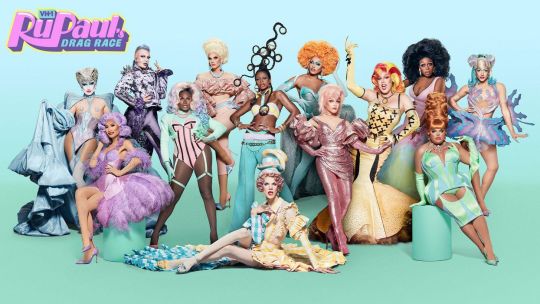
Dance is famous for its ability to instill valuable life skills. But it can also be a conduit to so many other forms of artistic expression. And if you've ever watched the phenomenon that is "RuPaul's Drag Race," you've seen how interdisciplinary art can be—and how dance and the art of drag often work in harmony.
The show has made huge stars of its contestants, and among the most famous are those who trained in dance before they started drag. We spoke with four sickening "Drag Race" stars about how dance helped boost their careers in the direction of drag—and to eventual stardom.
Brooke Lynn Hytes
View this post on Instagram
A post shared by Brooke Lynn Hytes (@bhytes)
You might know drag artist Brooke Lynn Hytes from watching her compete—and dance on pointe—on season 11 of "RPDR." Or perhaps you know her as the main judge on the spinoff series, "Canada's Drag Race." But did you know Hytes had a full-fledged dance performance career before entering the world of drag?
"I found dance a little bit later in life," Hytes says, who took her first dance class in the eighth grade. "I noticed very quickly that I had a good facility for it." A year later, while attending a high school arts program, a friend asked Hytes to audition with her for a summer session at Canada's National Ballet School. "She didn't even show up to audition," Hytes remembers. But Hytes showed up—and made the cut.
She trained at the school from grades 10 through 12, and an additional two years after that, before moving to Germany to study at the School of the Hamburg Ballet. Just two weeks in, Hytes got a call from dance pioneer Rudi van Dantzig, who'd taken notice of her while teaching at Canada's National Ballet School. He was looking to see if she'd play a lead role in a ballet he was mounting in South Africa, and, later, Dantzig helped Hytes secure a full-time contract with Cape Town City Ballet. But after two years with the company, Hytes found the job wasn't fulfilling. "I just had no interest in doing a double cabriolet or all the male stuff," she says. "I wanted to be the tall, pretty girl."
Hytes moved to New York City to dance with Les Ballets Trockadero de Monte Carlo, the all-male-presenting ballet troupe that performs on pointe, and in drag. "It was very freeing," she says. But having to be slapstick funny—a hallmark of the company—wasn't exactly her "thing." And at that point in her career, her passion for dance was withering.
So, after four seasons, she left the company to focus full-time on drag. But her dance past continued to play a role: "My dance career has taught me important life lessons and life skills, like the importance of working as a group and being professional, and being able to take criticism," Hytes says. "And those are all things that have served me very well in my drag career."
Rosé
View this post on Instagram
A post shared by The Rosé (@omgheyrose)
On the most recent season of "RPDR", contestant—and queen of throwing shade (#IFYKYK)—Rosé made a real name for herself. In fact, she clawed her way to the top four in the "Grand Finale" episode.
Rosé attributes her success on the show (and beyond) to her background in dance and musical theater. "In college, I started really forming better technique," Rosé says. "I was a part of several modern dance companies that toured the world through my university."
The theater training, in particular, boxed Rosé within traditional conceptions of gender. "I was going through a theatre program that, for the sake of working in the industry, was trying to shape my ability and form to be more masculine." But the dance classes she took allowed for the opposite: expression. "When I was a kid, dance was definitely a form of gender expression when I was confused about all of that," she says.
Years later, those experiences continue to show up in Rosé's high-octane, fully embodied drag. "Little things from ballet inform my posture—like how I walk and hold myself," the NYC-based entertainer says. "Dance has also given me an awareness of my body. And because drag is so physical in its nature, dance has contributed not just to the performance aspect of my drag, but to how I look and how I move in a drag."
Denali
View this post on Instagram
A post shared by Denali (@denalifoxx)
Chicago-based drag artist Denali, who served as a cast member on the most recent season of "RPDR," says her drag is based "solely around my ability to move, perform, and dance." She developed her craft performing in nightlife scenes throughout the Windy City. "I was booked a lot as the 'high-energy performance girl,' and filled that spot in most shows, since Chicago has a lot of artsy, conceptual performers, but not a lot of stunt queens." (Stunt queens are known for their jaw-dropping, often acrobatic, tricks.)
Her time as a figure skater inspired her to take up dance. "As cross-training, we did a lot of ballet, jazz, and hip hop," she says. "But I gravitated more towards hip hop, and blended different styles on the ice." Being a figure skater also helped Denali understand that she didn't have to stick to traditional gender expressions. Dance, she says, reinforced that.
When asked which choreographers she dreams of working with, Denali names Parris Goebel (and The Royal Family). "She's leading the mainstream dance movement in all facets and truly creates some of the most intricate shapes and movement in her work," she says. "I would also love to work with Yanis Marshall, Spella, and Kiel Tutin."
These sources of inspiration—and the years of dance training that came before—have established a deep appreciation for what the art has given her. "I wouldn't be the drag artist I am now if it weren't for dance," she says.
Milan
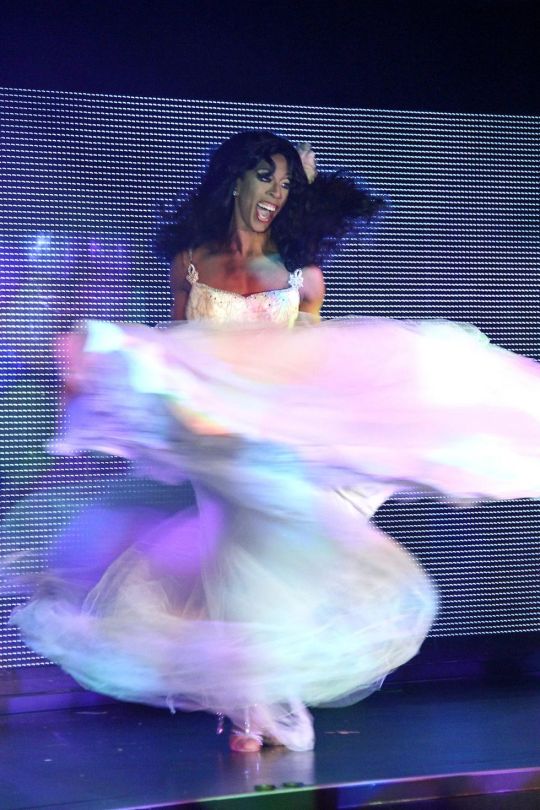
For Season 4 queen Milan, their interest in dance began early—really early. "My mom says when she was pregnant with me that she'd go dancing, and I would kick in the womb," Milan says. But they fell in love with the art form watching the dance-heavy Emerald City sequence in The Wiz. Then, during their senior year of high school, Milan says, "I participated in show choir. A member offered to pick me up and take me to her ballet class at the Florence Ballet Academy."
While in college, Milan would be accepted to a summer intensive program at The Ailey School. "I loved studying at The Ailey School, but I also really wanted to showcase my acting and singing ability as well," they say. "So, I returned to college and completed my BA in Theater at the University of South Carolina." Such diversified training would not only propel Milan to the biggest platform for drag, but would also lead them to Broadway stages. Billed as Dwayne Cooper, they've been part of the Broadway casts of Motown The Musical and Hairspray.
Still, dance—above other art forms—is Milan's "happy place," they say. "It's where my freedom lives. And if you are thinking about parlaying your dance training into a drag career, do it! Don't limit your expression or abilities by staying in one lane. Drag can open doors you never thought of—and free you from the trappings of conforming to what others want you to be as a dancer."
from Dance Spirit https://ift.tt/3hlMp5C
0 notes
Text
“В честь пропавшего солдата” Руди Ван Данциг
Небольшая предыстория.
У меня затяжное книжное похмелье. Еще осенью я начала читать Игру престолов, но как-то не сложилось и с тех пор я только фанфики читала. Даже стыдно.
И тут мне Юля скидывает название книжечки и краткое описание:
“Любительский перевод автобиографического романа нидерландского писателя Руди ван Данцига (Rudi van Dantzig) «Voor een verloren soldaat» (1984–1985), посвященного романтическим отношениям между двенадцатилетним мальчиком и канадским солдатом в последние месяцы нацистской оккупации Нидерландов во время Второй мировой войны. (18+)”
Меня заинтересовало.
Хочу сказать сразу, я вообще не любитель таких произведений. Я читала “Лолиту” Набокова и ничего, кроме отвращения, она во мне не вызвала. Еще и имя у него там отвратное было - Гумберт Гумберт. Фу.
Так вот, я немного ушла от темы. Не знаю почему, но мне захотелось почитать. Книга, к тому же, не большая.
Как же я пожалела. Я тут написала, что Лолита мне не понравилась? С этой книгой все хуже.
В самом начале нам просто рассказывают о жизни 11-летнего мальчика, Йеруна. Во время войны родители похлопотали и отправили его из города, а они жили в Амстердаме, в сельскую местность - Фрисландия. Там семьи принимали вот таких вот детей с городов, так как там было туго с едой, проживанием, да и вообще небезопасно.
И по началу все хорошо. Мальчик свыкался с приемной семьей и часто встречался с другом, который тоже переехал с ним во Фрисландию и жил на соседней ферме. И вот с этим другом он впервые знакомится с тем, что такое возбуждение, тяга к противоположному полу. Хотя при этом он мало что понимает и всего боится, конечно же. При чем автор не стесняется описывать все в подробностях.
А потом немцы разбомбили мост, который был выходом из села и жителей спасли канадские солдаты. Помогли отреставрировать мост, разбив рядом лагерь.
И вот тут появляется солдат, Волт, которого я ненавижу всеми фибрами своей души.
Все началось как в этих историях про педофилов - он угостил мальчика конфетками. А так как детям в школе втирали о том, какие важные эти солдаты, они Освободители, Йерун почувствовал себя избранным. И в следующий раз этот солдат, молодой парень, привез мальчика в какой-то дом, где были некоторые солдаты, и за сараем лапал его, целовал. Мне уже тогда было мерзко и противно.
Логичным был бы вопрос: Яна, почему же ты не закрыла эту книгу и не легла спокойно спать?
Потому что я должна была узнать, что случится дальше! Я так переживала за мальчика, что была обязана дочитать.
И мне было тошно на протяжении всей книги. Потому что конечно же этот Волт воспользовался мальчиком, занялся с ним сексом и более того, даже заставил отсосать себе. Но знаете? Не это было самым ужасным для меня.
Кошмарно было то, что Йерун, не смотря на то, что ему было противно, он желал этих прикосновений. Он считал, что это Бог послал ему этого солдата и молился за него. Думал, что Волт заберет его с собой в Америку. А Волт, воспользовавшись мальчиком, просто уехал в один день со всеми солдатами, даже никак не попрощавшись. Оставив лишь фотографию ранее. И после того, как трахнул его в палатке, прошептал “I love you”, вот только это было вранье, которое мальчик все-равно не понял, так как говорят они на разных языках.
Вскоре после этого война закончилась и за Йоруном приехала его мать, чтобы забрать в Амстердам. И там мальчик все еще ждал, когда же Волт вернется к нему, искал его среди канадских солдат, которые еще были в Амстердаме. Но не дождался. И хорошо.
Книга очень тяжелая, правда. У меня даже голова разболелась, пока читала. И вы себе не представляете, сколько во мне ненависти к этому ублюдочному Волту. А еще к тем, кто писал аннотацию к книге! “Романтические отношения между мальчиком и канадским солдатом” РОМАНТИЧЕСКИЕ??!! Он просто насильничал над бедным, ничего не понимающим, запутавшимся мальчиком! А его дружки наверняка все знали, так как он при них отводил его в палатку, или они сидели у моря, и никто ничего сказал.
Еще и фильм по этой книге сняли!
Ненавижу эту книгу. Еще больнее то, что это реальная история автора, который пережил это в детстве и книга, по сути, рассказывает о том, как он познавал себя и свою ориентацию.
Не читайте “В честь пропавшего солдата”. Никогда. Я серьезно, не повторяйте мою ошибку.

«Бог, — говорю я и надеюсь, что он слышит меня, — пожалуйста, если солдат — мой друг, то сделай так, чтобы я всегда был рядом с ним. И пожалуйста, пожалуйста, чтобы никто об этом не узнал».
«Дорогой Бог, сделай так, чтобы он вернулся, чтобы он нашёл меня. Если ты сделаешь, что он вернётся, то я буду делать всё, что ты захочешь».
#книга#book#voor een verloren soldaat#в честь пропавшего солдата#yana book#по-русски#русский тамблер#русский пост
10 notes
·
View notes
